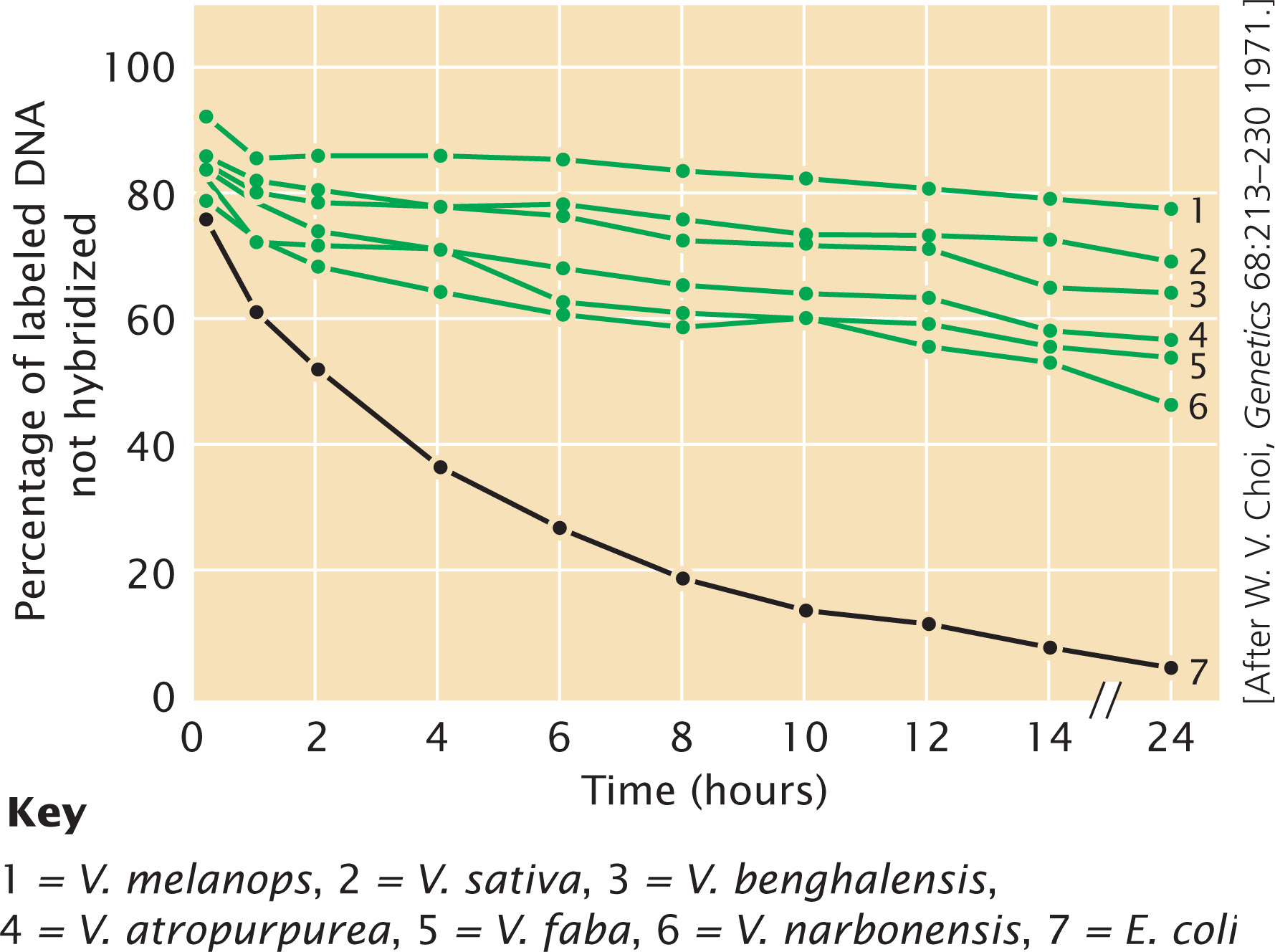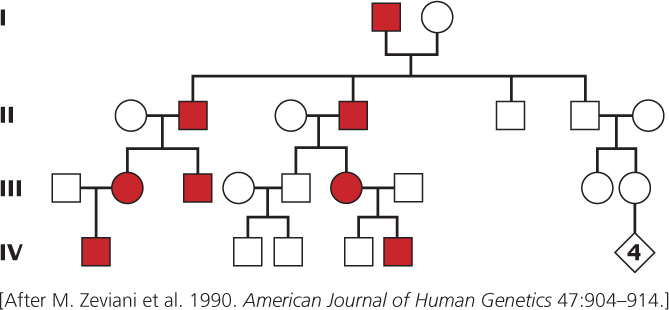Challenge Questions
Section 11.1
Question 11.36
An explorer discovers a strange new species of plant and sends some of the plant tissue to a geneticist to study. The geneticist isolates chromatin from the plant and examines it with an electron microscope. She observes what appear to be beads on a string. She then adds a small amount of nuclease, which cleaves the string into individual beads that each contain 280 bp of DNA. After digestion with more nuclease, a 120-bp fragment of DNA remains attached to a core of histone proteins. Analysis of the histone core reveals histones in the following proportions:
| H1 | 12.5% |
| H2A | 25% |
| H2B | 25% |
| H3 | 0% |
| H4 | 25% |
| H7 (a new histone) | 12.5% |
324
On the basis of these observations, what conclusions could the geneticist make about the probable structure of the nucleosome in the chromatin of this plant?
Section 11.3
Question 11.37
 In DNA-hybridization experiments on six species of plants in the genus Vicia, DNA was isolated from each of the six species, denatured by heating, and sheared into small fragments (W. Y. Chooi. 1971. Genetics 68:213–230). In one experiment, DNA from each species and from E. coli was allowed to renature. The graph shows the results of this renaturation experiment.
In DNA-hybridization experiments on six species of plants in the genus Vicia, DNA was isolated from each of the six species, denatured by heating, and sheared into small fragments (W. Y. Chooi. 1971. Genetics 68:213–230). In one experiment, DNA from each species and from E. coli was allowed to renature. The graph shows the results of this renaturation experiment.

- a. Can you explain why the E. coli DNA renatures at a much faster rate than does DNA from all of the Vicia species?
 Vodder vetch (Vicia sativa).[Bob Gibbons/Alamy.]
Vodder vetch (Vicia sativa).[Bob Gibbons/Alamy.] - b. Notice that, for the Vicia species, the rate of renaturation is much faster in the first hour and then slows down. What might cause this initial rapid renaturation and the subsequent slowdown?
Section 11.4
Question 11.38
 Steven Frank and Laurence Hurst argued that a cytoplasmically inherited mutation in humans that has severe effects in males but no effect in females will not be eliminated from a population by natural selection, because only females pass on mtDNA (S. A. Frank and L. D. Hurst. 1996. Nature 383:224). Using this argument, explain why males with Leber hereditary optic neuropathy are more severely affected than females.
Steven Frank and Laurence Hurst argued that a cytoplasmically inherited mutation in humans that has severe effects in males but no effect in females will not be eliminated from a population by natural selection, because only females pass on mtDNA (S. A. Frank and L. D. Hurst. 1996. Nature 383:224). Using this argument, explain why males with Leber hereditary optic neuropathy are more severely affected than females.
Question 11.39
 In a study of a myopathy, several families exhibited vision problems, muscle weakness, and deafness (M. Zeviani et al. 1990. American Journal of Human Genetics 47:904–914). Analysis of the mtDNA from affected persons in these families revealed that large numbers of their mtDNA possessed deletions of varying length. Different members of the same family and even different mitochondria from the same person possessed deletions of different sizes; so the underlying defect appeared to be a tendency for the mtDNA of affected persons to have deletions. A pedigree of one of the families studied is shown here. The researchers concluded that this disorder is inherited as an autosomal dominant trait and they mapped the disease-causing gene to a position on chromosome 10 in the nucleus.
In a study of a myopathy, several families exhibited vision problems, muscle weakness, and deafness (M. Zeviani et al. 1990. American Journal of Human Genetics 47:904–914). Analysis of the mtDNA from affected persons in these families revealed that large numbers of their mtDNA possessed deletions of varying length. Different members of the same family and even different mitochondria from the same person possessed deletions of different sizes; so the underlying defect appeared to be a tendency for the mtDNA of affected persons to have deletions. A pedigree of one of the families studied is shown here. The researchers concluded that this disorder is inherited as an autosomal dominant trait and they mapped the disease-causing gene to a position on chromosome 10 in the nucleus.
- a. What characteristics of the pedigree rule out inheritance of a trait encoded by a gene in the mtDNA?
- b. Explain how a mutation in a nuclear gene might lead to deletions in mtDNA.
 [After M. Zeviani et al. 1990. American Journal of Human Genetics 47:904–914.]
[After M. Zeviani et al. 1990. American Journal of Human Genetics 47:904–914.]
Question 11.40
Mitochondrial DNA sequences have been detected in the nuclear genomes of many organisms, and cpDNA sequences are sometimes found in the mitochondrial genome. Propose a mechanism for how such “promiscuous DNA” might move between nuclear, mitochondrial, and chloroplast genomes.
Go to your  to find additional learning resources and the Suggested Readings for this chapter.
to find additional learning resources and the Suggested Readings for this chapter.